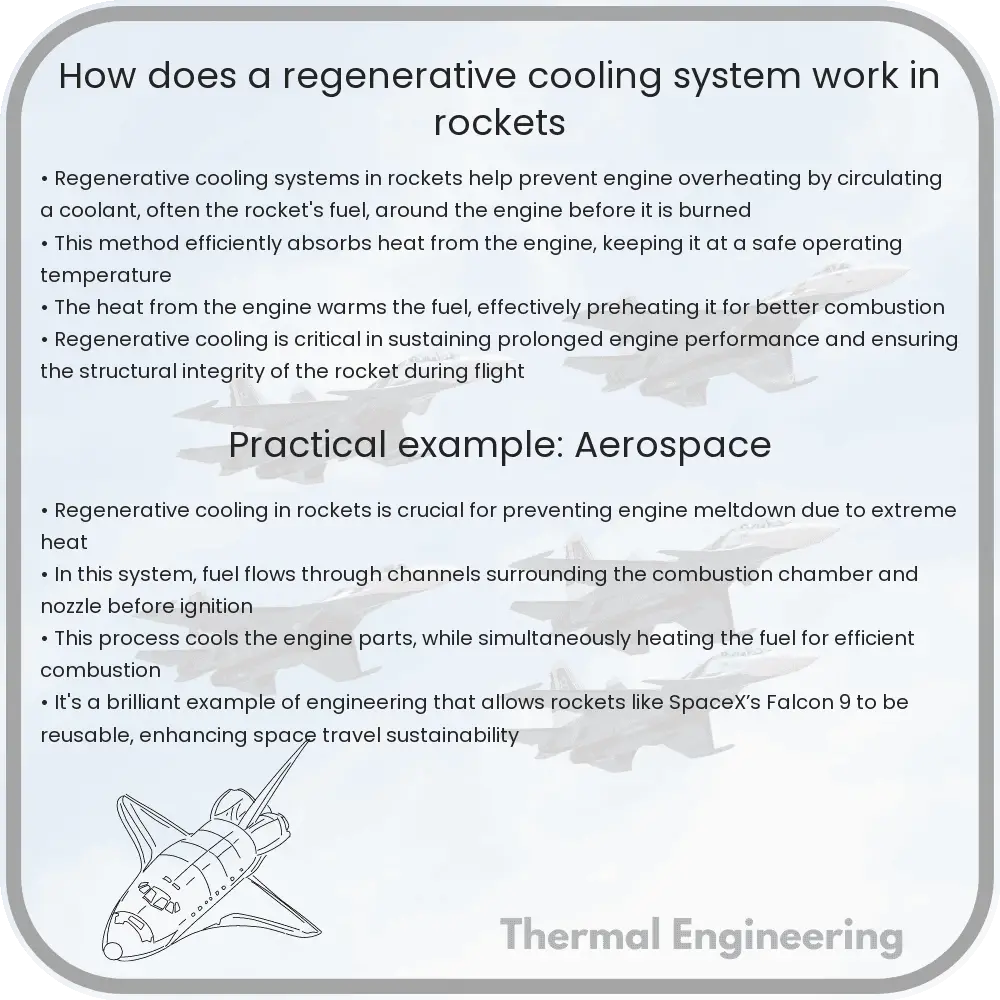Learn how regenerative cooling systems in rockets protect engine parts from extreme heat, enhancing performance and safety in space exploration.

Understanding Regenerative Cooling Systems in Rockets
Regenerative cooling is a critical technology used in rocket engines to manage the extreme temperatures that result from combustion processes. This cooling technique not only protects the engine parts from overheating but also enhances the efficiency and performance of the rocket. Let’s explore how regenerative cooling works and its importance in space exploration.
Principles of Regenerative Cooling
Regenerative cooling in rockets involves the circulation of a coolant, typically the liquid propellant itself, around the combustion chamber and nozzle before the propellant is injected into the chamber for combustion. This technique effectively absorbs and dissipates the heat generated during combustion, preventing the engine components from melting or deforming due to high temperatures.
Key Components and Process
- Coolant Circulation: The coolant, which is often the liquid fuel or oxidizer, is routed through channels that are embedded in the walls of the combustion chamber and nozzle. As the propellant flows through these channels, it absorbs heat from the surrounding engine parts.
- Heat Absorption: The heat from the combustion chamber raises the temperature of the coolant. Since the coolant is typically the fuel or oxidizer, this preheating process also has the benefit of improving combustion efficiency when the coolant is subsequently injected into the combustion chamber.
- Thermal Stress Management: By continuously removing heat from the engine wall, the regenerative cooling system maintains the structural integrity of the combustion chamber and nozzle, which are subjected to thermal stresses during operation.
Advantages of Regenerative Cooling
- Enhanced Engine Lifespan: By preventing overheating, regenerative cooling extends the lifespan of rocket engine components.
- Improved Performance: Preheating the propellant improves its combustion properties, leading to more efficient thrust and better overall performance of the rocket.
- Safety: Effective heat management reduces the risk of engine failure due to structural damage from high temperatures.
Challenges and Considerations
While regenerative cooling systems are highly effective, designing these systems presents several challenges:
- Cooling Channel Design: The channels through which the coolant flows must be optimally designed to maximize heat transfer without compromising the structural strength of the combustion chamber and nozzle.
- Material Selection: Materials that can withstand high temperatures and have good thermal conductivity are critical for the effectiveness of regenerative cooling systems.
- Balancing Efficiency: Engineers must balance the cooling requirements with the desire to minimize the weight and complexity of the rocket engine.
Conclusion
Regenerative cooling systems are a vital part of modern rocket engineering, allowing for safer and more efficient space travel. By leveraging the propellants as coolants, these systems cleverly manage the immense heat generated during rocket operation while improving the engine’s performance. As rocket technology advances, the importance of innovative cooling solutions like regenerative cooling continues to grow.